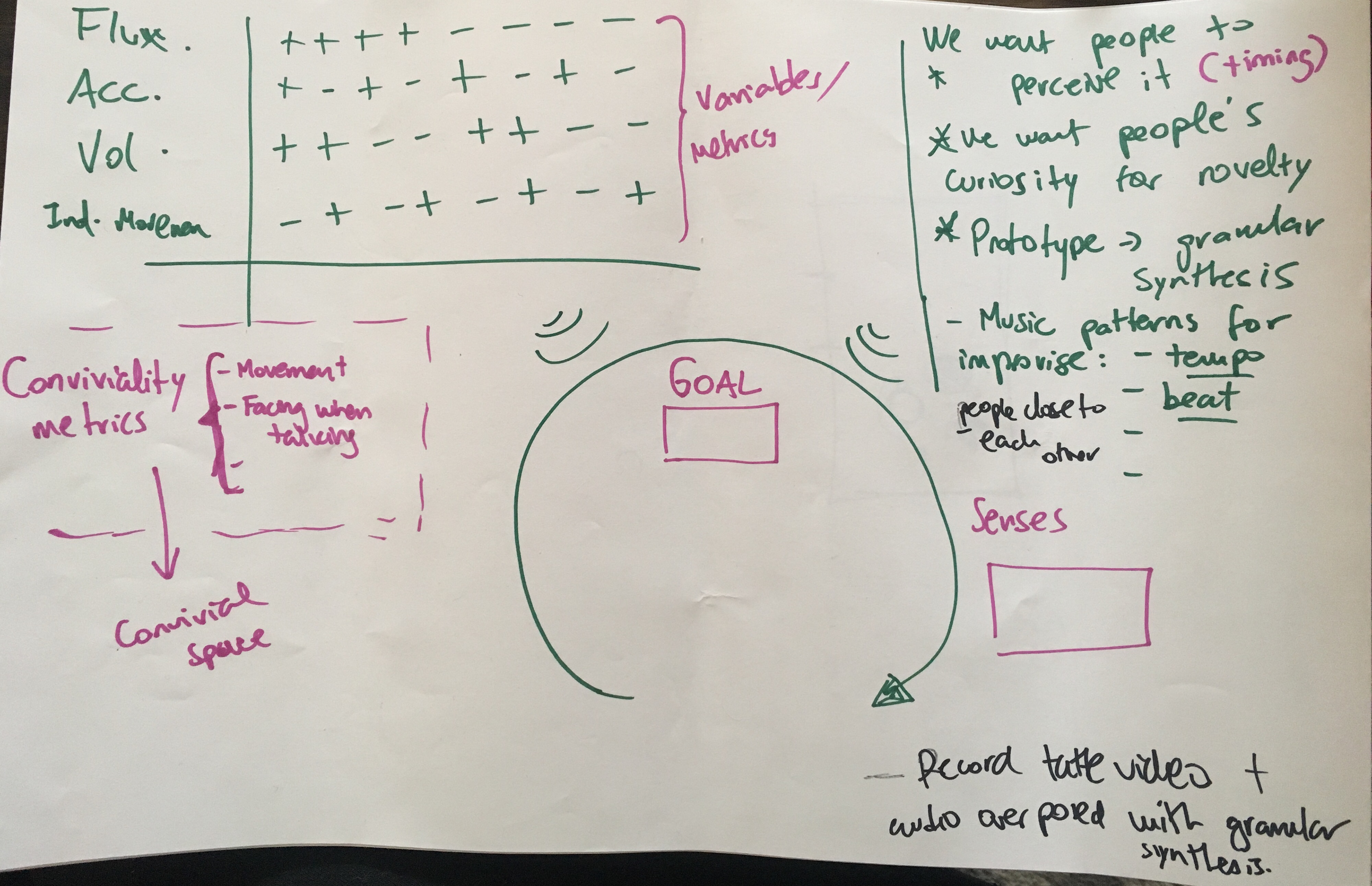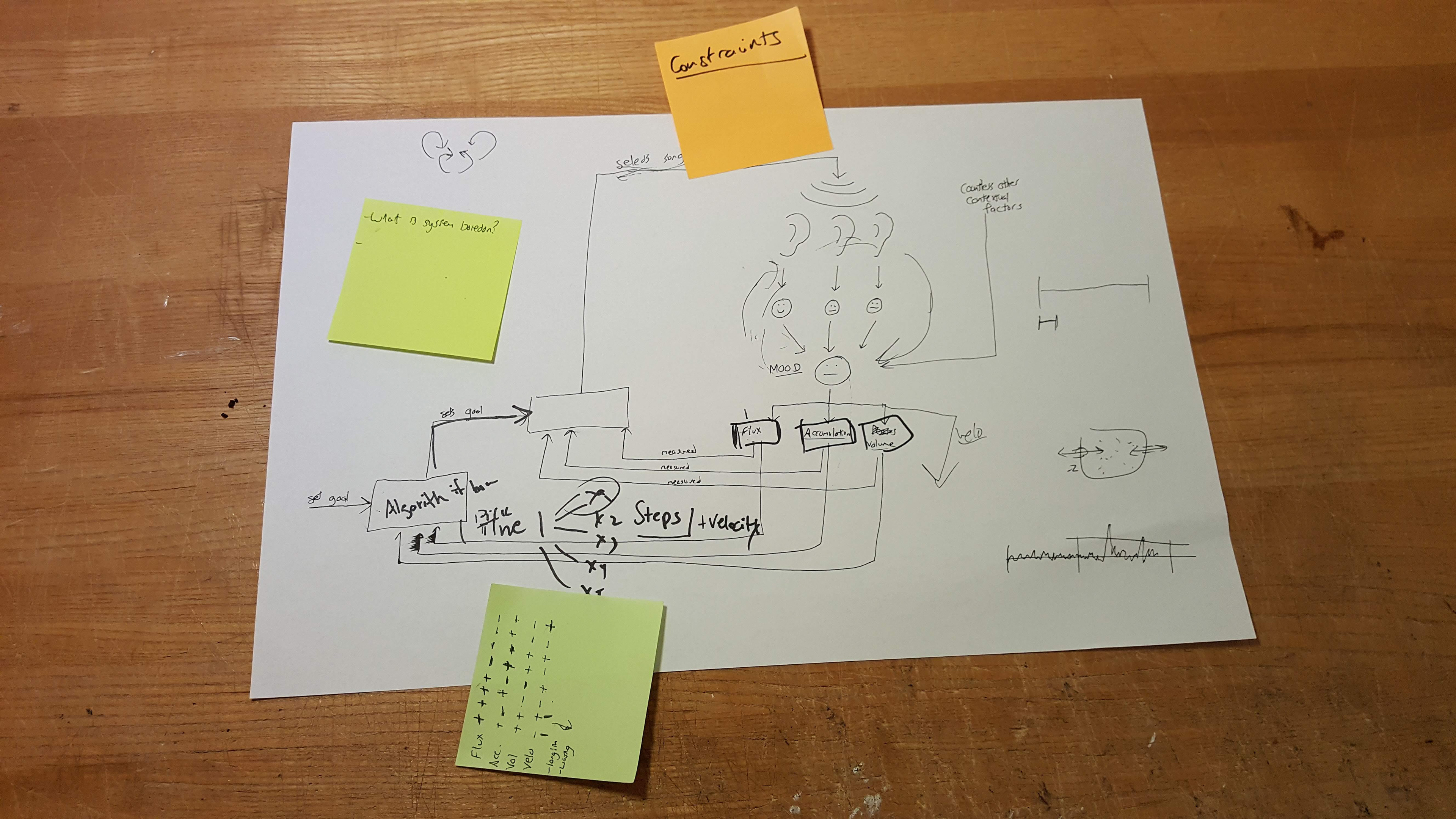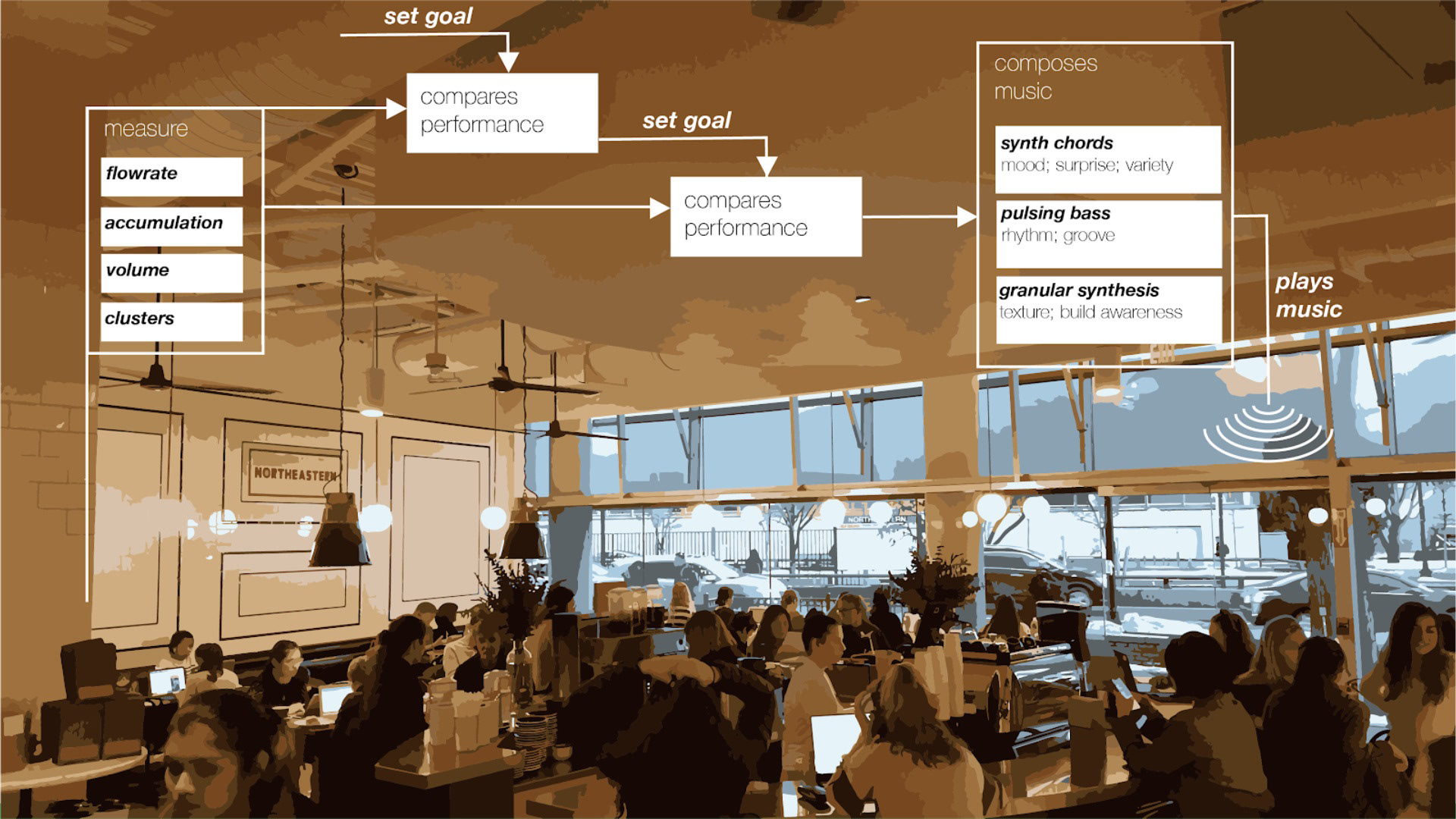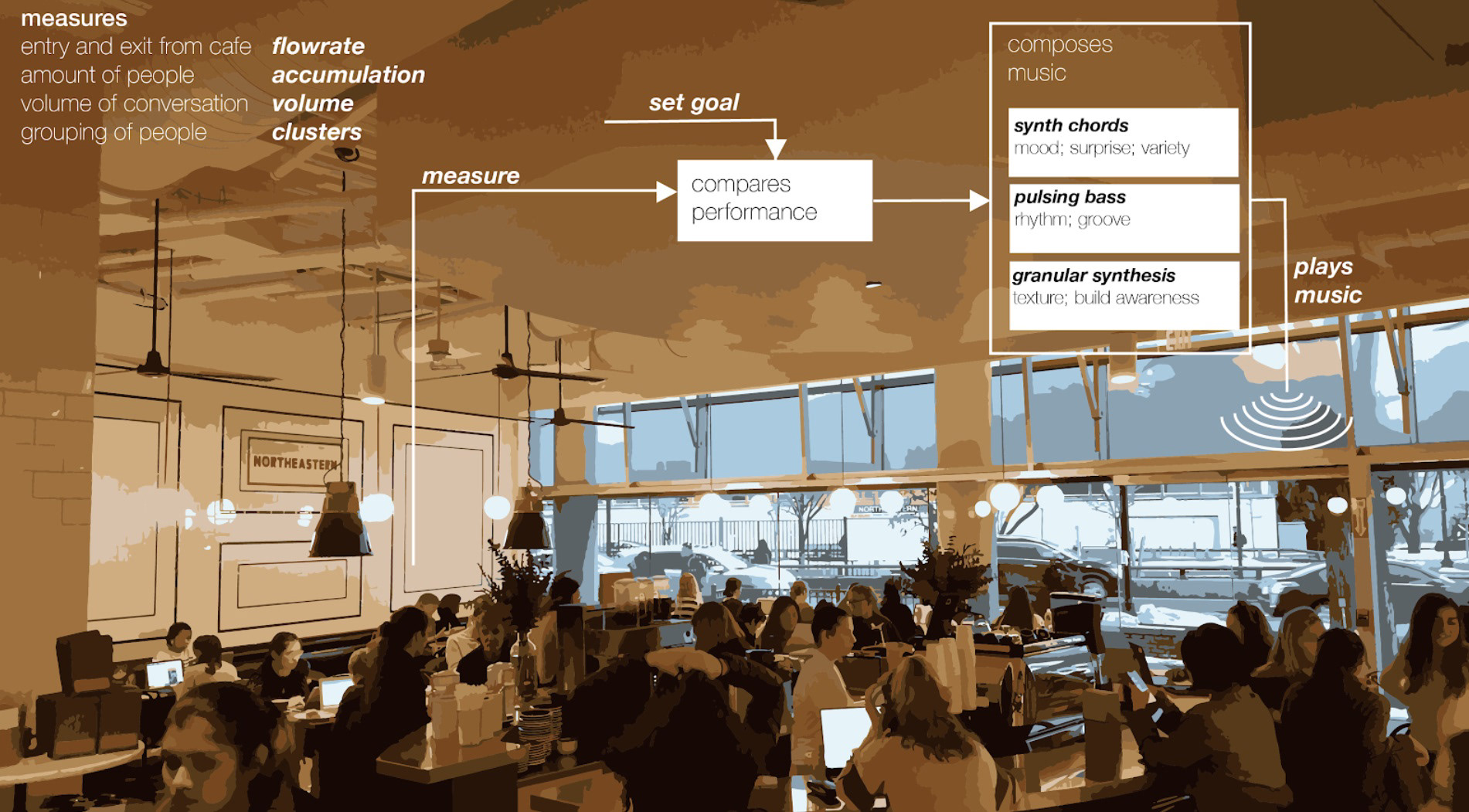How do people interact with music? How does music allow improvisation?
If we consider, for example, the interactions that take place at a DJ’s concert, we can visualize improvisation in both ways: people don’t know what the DJ is planning on playing, therefore they are just improvising in their dance moves as soon as the rhythm starts to emerge. Likewise, the DJ starts to play around with the beats and rhythm and keeps improvising according to the crowd’s reactions and energy.
Can we design a system that could potentially have a similar behaviour?
Concept: An improvisational system that can pick up variables from a cafe and adjust the mood of the environment through music.
Methods: Ethnographic photo-study | Review of Literature
Process: We visited a cafe near Northeastern at different times and days to observe how people behave and how those behaviors generate and create the sense of a mood of a space. After analysing some patterns, we discovered that the most important elements in determining the mood of that space were the amount of people coming in and out, the amount of people in the space, their interactions, and how people were grouped.
We began to design a system model with these elements in mind as inputs to the system. Then, we grouped them and named our variables:
flowrate: entry and exit from the cafe
accumulation: amount of people in the cafe
volume: loudness of conversation
clusters: grouping of people
Sketches


We sketched second order cybernetic systems after revising some literature. We read about Gordon Pask's Musicolour, and how the system would get bored and change it's goal. To develop an improvisational system, it must had a learning component to it.
We had the opportunity to connect and talk with Paul Pangaro, a former student of Pask and leader in cybernetics, to discuss our project. Among other things, he instructed us to begin to define the system goal and consider how the system might work before incorporating the learning element.
Therefore, we determined the system's boundaries and it's goal: "To drive conviviality".
Finally, we developed the system's models for adjusting and improvising to people's behaviors based on our boundaries and variables.


Prototype
Further Considerations
I think it would be key to address the importance of time and timing as primary in improvisation. What is the loop time for our Harmonic System? The quality of perceived time I believe would be important to take this project further and think of its effect on people’s agency and autonomy, allowing them to be aware of time as they move through a space (either touchpoints on a service or interaction) that viewed together as a sequence of events would allow the participants to perceive they have agency in their experience of time.
Additionally, moving forward with the project I would like to focus more on the psychological effects that music might have in people, not only in a cafe, but for other applications such as enhancing studying, running or doing sports, and even as therapeutic medium.
I would also like to pay more attention to not only the customers in an environment, but also how might the system enhance the experience and mood of the staff, therefore, allowing them to treat customers better enriching the whole experience journey from beginning to end.
Partner: Colin Gerrity